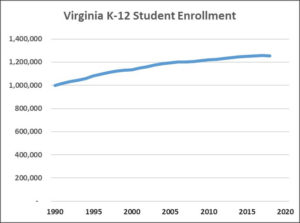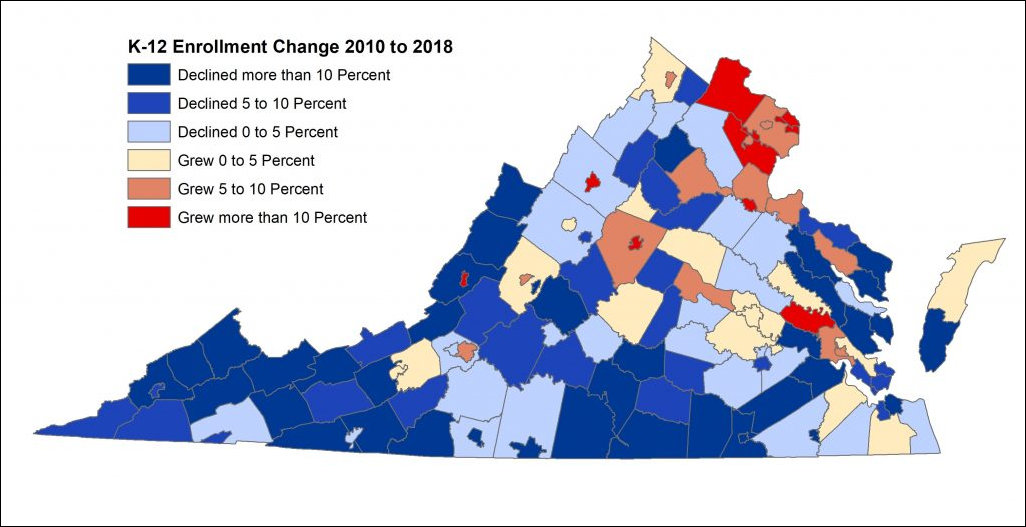After decades of steady enrollment growth, Virginia’s public school system had 2,000 fewer students in 2018 than the year before. The trend is not uniform geographically; enrollment is still increasing in some school systems while it is falling in others. But the net result statewide is fewer students statewide, according to our favorite demographer, Hamilton Lombard, publishing in the StatChat blog.
The decline was not entirely unexpected. Birth rates in Virginia and nationally have declined since the recession, and the number of children enrolling in school five years later reflects that decline. But the out-migration of families in recent years, a reversal of the in-migration from decades past, accelerated the downturn, wrote Lombard, with the Demographics Research Group at the University of Virginia.
Strong enrollment over the past five years in Northern Virginia and stable enrollment in Central Virginia and the Shenandoah Valley were offset by massive declines in Eastern, Southwest, Southside, Hampton Roads, and West Central regions.
Because enrollment tracks closely with births, the number of students can be predicted with a fair degree of confidence. The trends of the next five years will be largely replicated — the main difference being a marked slowdown in Northern Virginia enrollment growth. In absolute numbers, the loss of student population will be greatest in the major population center of Hampton Roads. Check out Lombard’s post for details.
Lombard explores the fiscal implications for local governments:
Falling student enrollment also typically means less state funding for school divisions. In order to meet the Virginia Board of Education’s standards of quality, Virginia allocates a specific amount of funding per student to each division based on VDOE’s calculation of their local government’s ability to pay for education costs (The Composite Index). In the short term, fewer students typically mean an immediate drop off in state funding for a division. In the longer term, fewer students in a division can cause their local Composite Index score to increase, which means the local government will need to assume a larger share of their school division’s educational expenses.
As Lombard observes, the falling number of students is just one facet of an aging population: “Currently, many school divisions are struggling to adapt to shrinking student enrollment, but within a decade, colleges and the workforce will also be forced to adapt as the class size of graduating high school students decreases.”
Bacon’s bottom line: Readers know that Mr. Gloom and Doom can’t help but end a post like this on a pessimistic note: As the population continues to age in the years ahead, Virginia will spend more on Medicaid and other services for the elderly and will spread the burden of taxes, debt and unfunded liabilities over fewer workers than would be the case if population continued growing. The long-term prognosis does not look good.



Leave a Reply
You must be logged in to post a comment.